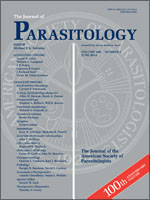Auriculostoma totonacapanensis n. sp. is described from the Mexican tetra, Astyanax mexicanus (Actinopterygii, Characidae) collected in a tributary creek of the Bobos River in Filipinas, Veracruz, Mexico. The new species is set apart from all congeners by the combination of some morphological characters such as the testes position (oblique in most specimens), the ventral to oral sucker ratio (1:1.2 × 1:1.1), the cirrus sac originating at the ovarian region, and by having vitelline follicles not confluent in the posttesticular region. Auriculostoma totonacapanensis n. sp. closely resembles Auriculostoma platense (Szidat, 1954) Scholz, Aguirre-Macedo, and Choudhury, 2004 and Auriculostoma diagonale Curran, Tkach and Overstreet, 2011 by possessing oblique testes; however, it differs from both species by possessing a genital pore located at level of the cecal bifurcation and by having vitelline follicles extending anteriorly up to the cecal bifurcation level, instead of a genital pore located between the anterior margin of the ventral sucker and cecal bifurcation, and vitelline follicles extending anteriorly to the mid level of the esophagus as in A. platense or to the pharynx level as in A. diagonale. Additionally, the new species differs from A. diagonale by having vitelline follicles not confluent or scarcely confluent in the posttesticular region rather than extensively confluent. Scanning electron microscopy micrographs of the new species demonstrated the presence of a single pair of muscular lobes on either side of the oral sucker, with a broad base, stretching from the ventrolateral to the dorsolateral side. Maximum parsimony and Bayesian inference analyses of the 28S rRNA gene sequences placed A. totonacapanensis as sister species of Auriculostoma astyanace Scholz, Aguirre-Macedo, and Choudhury, 2004. Nucleotide variation between A. totonacapanensis and A. astyanace was 2.0% and 3.6% for the 28S rRNA gene and ITS2 sequences, respectively. Sequence variation for the 28S rRNA gene between Auriculostoma spp. and 7 other genera of Allocreadiidae ranged from 2.4 to 6.3%.
How to translate text using browser tools
1 June 2014
A New Species of Auriculostoma (Digenea: Allocreadiidae) in the Mexican Tetra Astyanax mexicanus (Actinopterygii: Characidae) from Central Veracruz, Mexico, Described with the Use of Morphological and Molecular Data
Ulises Razo-Mendivil,
Berenit Mendoza-Garfias,
Gerardo Pérez-Ponce de León,
Miguel Rubio-Godoy
ACCESS THE FULL ARTICLE

Journal of Parasitology
Vol. 100 • No. 3
June 2014
Vol. 100 • No. 3
June 2014




